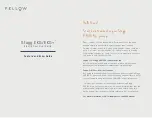
MAINTENANCE
Daily:
A.
Wash exposed cleanable areas.
Following daily and periodic maintenance procedures will enhance long-life for your equipment Climatic conditions —
salt air — may require more thorough and frequent cleaning or the life of the equipment could be adversely affected
STAINLESS STEEL:
To remove normal dirt, grease or product residue from stainless steel, use ordinary soap and
water (with or without detergent) applied with a sponge or cloth. Dry thoroughly with a clean cloth. Never use vinegar
or any corrosive cleaner.
To remove grease and food splatter or condensed vapors that have baked on the equipment, apply cleanser to a
damp cloth or sponge and rub cleanser on the metal in the direction of the polishing lines on the metal. Rubbing
cleanser as gently as possible in the direction of the polished lines will not mar the finish of the stainless steel.
NEVER RUB WITH A CIRCULAR MOTION. Soil and burnt deposits which do not respond to the above procedure
can usually be removed by rubbing the surface with SCOTCH-BRITE scouring pads or STAINLESS scouring pads.
DO NOT USE ORDINARY STEEL WOOL, as any particles left on the surface will rust and further spoil the
appearance of the finish. NEVER USE A WIRE BRUSH, STEEL SCOURING PADS (EXCEPT STAINLESS),
SCRAPER, FILE OR OTHER STEEL TOOLS. Surfaces which are marred collect dirt more rapidly and become more
difficult to clean. Marring also increases the possibility of corrosive attack. Refmishing may then be required.
TO REMOVE HEAT TINT:
Darkened areas sometimes appear on stainless steel surfaces where the area has been
subjected to excessive heat. These darkened areas are caused by a thickening of the protective surface of the
stainless steel and are not harmful. Heat tint can normally be removed by the foregoing, but tint which does not
respond to this procedure calls for a vigorous scouring in the direction of the polish lines using SCOTCH-BRITE
scouring pads or a STAINLESS scouring pad in combination with a powdered cleanser. Heat tint action may be
lessened by not applying or by reducing heat to equipment during slack periods.
TABLE STEAM KETTLE — ELECTRIC SELF CONTAINED
SECTION TWO — USER'S GUIDE
PAGE 3
USER’S GUIDE


































